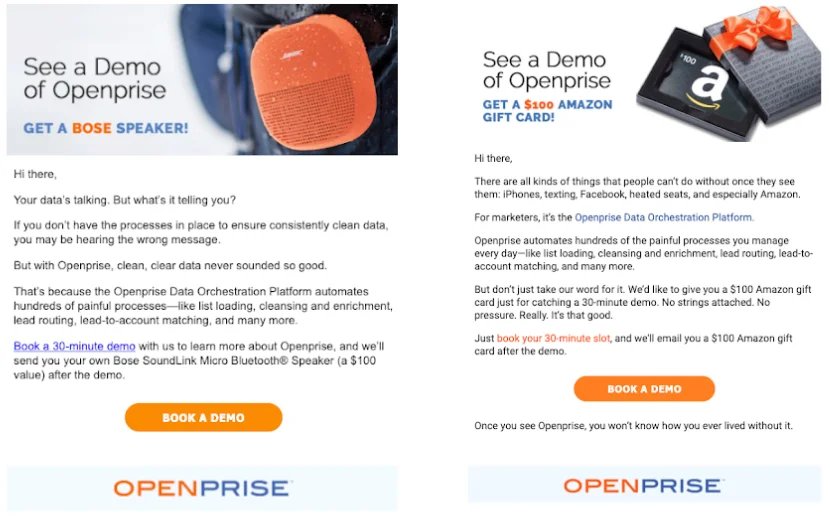
Account-Based Marketing is one of the hottest topics within the Marketing world, odds are you’re probably already running some kind of ABM programs at your company. You might have a golden list of accounts that the sales team wants to focus on, but you don’t have the budget for a shiny new ABM platform. Jasmine Chung, Demand Generation Manager at Openprise, showed us how they are doing it at their company and the results they are seeing.

Openprise decided to accelerate their Account-Based Marketing efforts and was in the process of evaluating ABM platforms, when they decided to keep their initiatives in house. To do this, they created a system that would allow them to run successful ABM campaigns with a strategy of acquisition, acceleration, expansion. This strategy enabled Openprise to engage with the right accounts to boost ROI, and accelerate their sales cycle by working with multiple stakeholders from the start.
Their strategy was comprised of seven steps:
When it came time to define their ICP, Openprise’s Marketing team asked themselves these key questions
To answer these questions, they first focused on life-time value (LTV), which is the predicted net profit attributed to the entire future relationship with the customer. With how COVID-19 has affected the world, they dug into their own data to find out which industries to target this year. ABM is all about targeting the right person at the right time.

One size does not fit all! Instead of MQLs, Openprise implemented an account grading system to “score” their target accounts. The team studied their own data from previous closed-won opportunities, and built their personalities and traits into a grading system so that the Sales team could be hyper focused without having to sift through numerous leads inside of Salesforce. However, this is only possible with a clean database. If things are not tagged properly, none of this will work properly. Learn more about building your target account list using data.

Openprise created this timeline to keep their ABM efforts on track and make sure Sales and Marketing were working together in their campaigns. After the list is created by Sales, it is sent to Marketing and tagged in their CRM appropriately. Then, retargeting begins and runs for a few weeks. After this, their marketing emails begin with Sales touches in between. The coordination between Sales and Marketing is key - like a race where the baton has to be handed off to the next runner before heading off.
Prospects’ interests change with the times -- adapt your offer as your prospects’ interests adapt to see the best results. Openprise’s initial offer of Bose headphones worked very well at first, however once the Covid-19 pandemic began they saw dwindling results. They switched the offer to an Amazon gift card instead and saw great results again.


Let’s break down why this method worked. Openprise defined their ICP by studying their data, then methodically targeted the best accounts based on their total account and lead engagement scores. They then selected the highest scoring accounts for their ABM campaign, knowing those accounts would be most likely to engage. This system allowed the Sales and Marketing teams to align in a more meaningful way with one playbook for the entire team. Additionally, Openprise enriched their account data through multiple providers, such as D&B or Zoominfo. Every data provider has its own strengths.
The Openprise team also set daily deliverables, used a common set of metrics, and followed a method of: test, improve, execute. By focusing their efforts on a smaller number of more targeted accounts, they were able to create more compelling, relevant offers.

In order to assess the outcome of your campaign the #1 thing you need is clean data -- everything needs to be deduped, tagged correctly, and attributed to the right campaigns. A clean database will allow you to turn your leads into contacts, match contacts to accounts, and monitor key account activities. Then you can get real insights into what’s working and what's not within your ABM campaigns. Learn more about B2B marketing attribution.